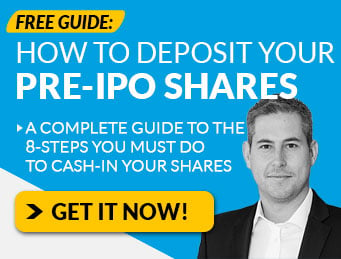While it’s tempting to think of the $2.1 trillion crude oil market as being completely controlled by a small handful of players…
Source: Visual Capitalist
Just like pretty much every other market, oil and gas investors have the option to invest in larger companies that often offer downside protection, income, and reasonable growth…
They can also opt for smaller – significantly higher risk and more volatile – companies that may offer the chance for huge upside returns.
In the oil industry, these smaller companies – known sometimes as “Craft Oil” – are usually “pure plays,” which are hyper-focused on one part of the value chain; such as exploration and production, refining, or marketing.
They may be more likely to develop new technological innovations that can drive the industry forward, and eventually be acquired by a larger company.
But before considering an investment in the “Craft Oil” space, it’s important to understand the mega trends that have the biggest potential impact on your returns.
That’s the topic of today’s issue of Private Capital Insider.
-Jake Hoffberg
P.S. Interested in investing in a “Craft Oil” play? Pytheas Energy – an AI-powered, early-stage oil and gas producer operating in Texas – is raising capital on the Equifund Crowd Funding Portal.
Go here to review their offering page and learn more.
Big Oil vs Craft Oil
Big Oil consists mainly of large, vertically integrated companies that combine upstream exploration activity, midstream transportation activity, and downstream refining activities.
Source: Visual Capitalist
Because of their size, they typically employ tens of thousands of people, generate billions of dollars in revenue, and are responsible for producing, transporting, refining, and marketing much of the world’s oil products (like gasoline and diesel fuel).
Source: Visual Capitalist
They also have the infrastructure to invest in developing long-term oil reserves – in particular, offshore drilling – and operate at an international scale; for example, ExxonMobil explores for oil and natural gas on six continents.
On the other hand, “Craft Oil” producers primarily focus on individual basins within North America.
Source: Visual Capitalist
Interestingly enough, Big Oil drills only 5% of all American oil wells.
The other 95% of all domestic wells are drilled by the smaller “Craft Oil” companies who focus mainly on the large North American oil basins.
These small companies are usually “pure plays” that are hyper-focused on one part of the value chain – such as exploration and production.
They also may be more likely to develop new technological innovations that can drive the industry forward, and eventually be acquired by larger companies.
Source: RSM
And as the exploration and production industry begins to grapple with the problems of finding new reserves, many companies are exercising increased caution, and shifting their strategies to target more profitable and geologically better-understood regions.
More specifically, we are seeing incredible consolidation in the Permian Basin.
According to Matthew Bernstein, a senior shale analyst at Rystad,
While supermajors operating in the Permian Basin have enough quality inventory to last an estimated 25 years at the current pace of drilling, private exploration and production companies would have around 11 years remaining at the current pace.
If these companies start drilling again at 2022’s pace, you’re going to exhaust that inventory in a shorter period of time.
For some E&Ps that could be five years or less.
The likely outcome of all this activity? Once this current consolidation cycle is completed, the available acreage, in large part, will be spoken for.
The players that remain will have amassed vast swaths of acreage, and there will be two pressing questions:
- How can we manage this portfolio of assets as efficiently as possible?
- How can we reduce our cost basis, reduce our carbon footprint, and also maximize the profitability of the assets we have?
The companies who can successfully answer these questions – and transition to the new reality – will stand to capture the enormous opportunity ahead.
A New Era Of Oil: The shift from big discoveries to asset management
If the last 100 years have been about long-term bets on land assets, innovation at the wellhead, and maximizing short-term profits to capture windows of favorable pricing…
The next decade will likely shift toward managing assets, maximizing long-term profitability, and handling environmental issues.
Even though Big Oil will almost certainly be the biggest winner of this new paradigm, thanks to their tremendous economies of scale, they have the same weakness all large commodity producers have – they have to focus on large, producing projects.
While mergers and acquisitions provide opportunities to consolidate new assets, and increase focus on what’s called “core assets”…
They also tend to force a divestiture of “non-core assets,” in order to free up resources as wells become “marginal.”
But interestingly enough, research suggests only ~30% of oil and gas is ever extracted from most existing wells using conventional methods.
Crude oil development and production in U.S. oil reservoirs can include up to three distinct phases: primary, secondary, and tertiary (or enhanced) recovery.
During primary recovery, the natural pressure of the reservoir or gravity drives oil into the wellbore, combined with artificial lift techniques (such as pumps) which bring the oil to the surface.
But only about 10 percent of a reservoir’s original oil in place is typically produced during primary recovery.
Secondary recovery techniques extend a field’s productive life generally by injecting water or gas to displace oil and drive it to a production wellbore, resulting in the recovery of 20 to 40 percent of the original oil in place.
However, with much of the easy-to-produce oil already recovered from U.S. oil fields, producers have attempted several tertiary, or enhanced oil recovery (EOR), techniques that offer prospects for ultimately producing 30 to 60 percent, or more, of the reservoir’s original oil in place.
Here’s why…
In theory, every oil and gas well goes through something called a decline curve – a method used to determine estimated ultimate recovery for an oil or gas reserve.
The 3 decline curves – exponential, hyperbolic, or harmonic – are important because they are used as one of the factors in determining the value of minerals or land. Source: Rock River Minerals
With conventional wells, the decline curve is often slow and steady.
With unconventional wells, it’s anything but.





